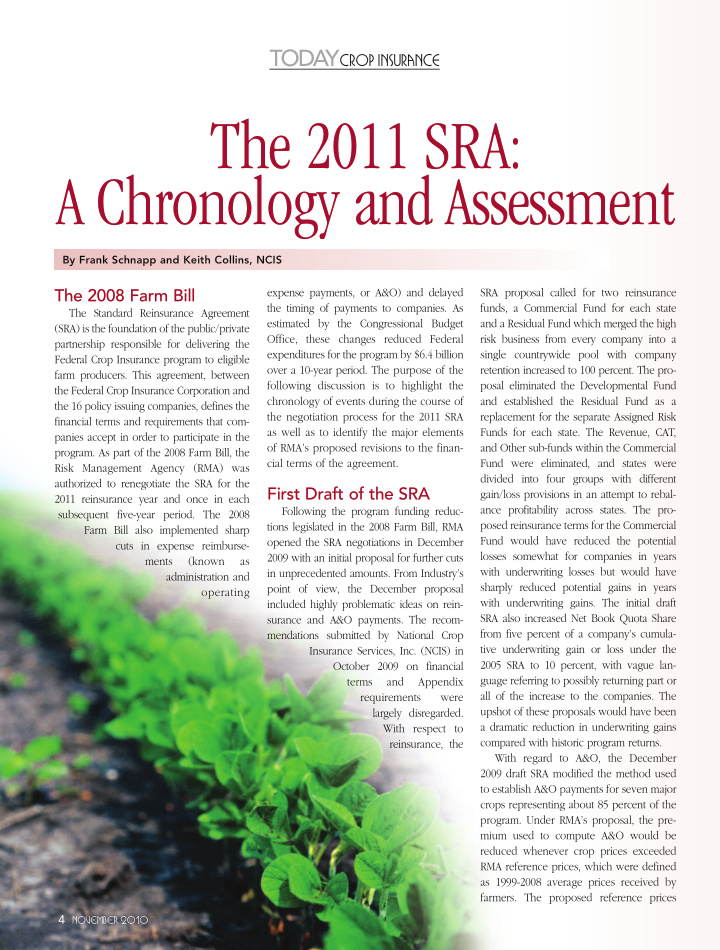



TODA Y crop insurance The 2011 SRA: A Chronology and Assessment By Frank Schnapp and Keith Collins, NCIS expense payments, or A&O) and delayed SRA proposal called for two reinsurance The 2008 Farm Bill the timing of payments to companies. As funds, a Commercial Fund for each state The Standard Reinsurance Agreement estimated by the Congressional Budget and a Residual Fund which merged the high (SRA) is the foundation of the public/private Office, these changes reduced Federal risk business from every company into a partnership responsible for delivering the expenditures for the program by $6.4 billion single countrywide pool with company Federal Crop Insurance program to eligible over a 10-year period. The purpose of the retention increased to 100 percent. The pro- farm producers. This agreement, between following discussion is to highlight the posal eliminated the Developmental Fund the Federal Crop Insurance Corporation and chronology of events during the course of and established the Residual Fund as a the 16 policy issuing companies, defines the the negotiation process for the 2011 SRA replacement for the separate Assigned Risk financial terms and requirements that com- as well as to identify the major elements Funds for each state. The Revenue, CAT, panies accept in order to participate in the of RMA’s proposed revisions to the finan- and Other sub-funds within the Commercial program. As part of the 2008 Farm Bill, the cial terms of the agreement. Fund were eliminated, and states were Risk Management Agency (RMA) was divided into four groups with different authorized to renegotiate the SRA for the First Draft of the SRA gain/loss provisions in an attempt to rebal- 2011 reinsurance year and once in each ance profitability across states. The pro- Following the program funding reduc- subsequent five-year period. The 2008 posed reinsurance terms for the Commercial tions legislated in the 2008 Farm Bill, RMA Farm Bill also implemented sharp Fund would have reduced the potential opened the SRA negotiations in December cuts in expense reimburse- losses somewhat for companies in years 2009 with an initial proposal for further cuts ments (known as with underwriting losses but would have in unprecedented amounts. From Industry’s administration and sharply reduced potential gains in years point of view, the December proposal operating with underwriting gains. The initial draft included highly problematic ideas on rein- SRA also increased Net Book Quota Share surance and A&O payments. The recom- from five percent of a company’s cumula- mendations submitted by National Crop tive underwriting gain or loss under the Insurance Services, Inc. (NCIS) in 2005 SRA to 10 percent, with vague lan- October 2009 on financial guage referring to possibly returning part or terms and Appendix all of the increase to the companies. The requirements were upshot of these proposals would have been largely disregarded. a dramatic reduction in underwriting gains With respect to compared with historic program returns. reinsurance, the With regard to A&O, the December 2009 draft SRA modified the method used to establish A&O payments for seven major crops representing about 85 percent of the program. Under RMA’s proposal, the pre- mium used to compute A&O would be reduced whenever crop prices exceeded RMA reference prices, which were defined as 1999-2008 average prices received by farmers. The proposed reference prices 4 NOVEMBER 2010
Recommend
More recommend